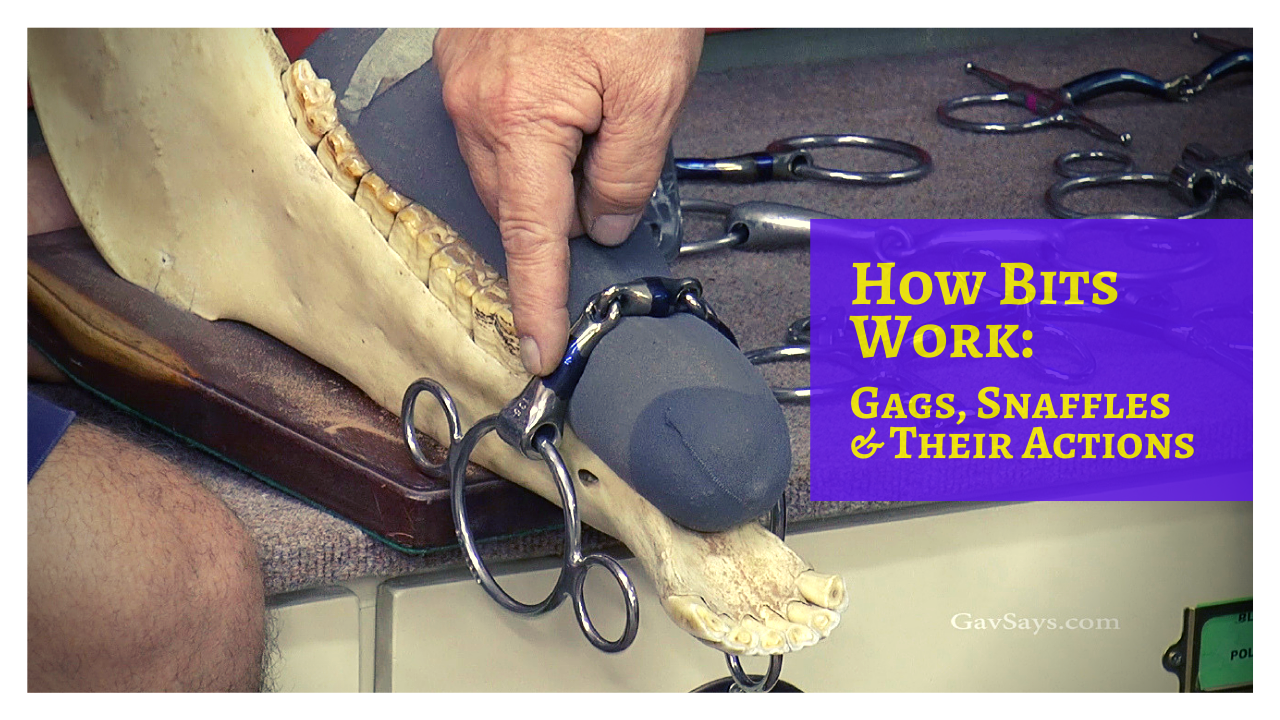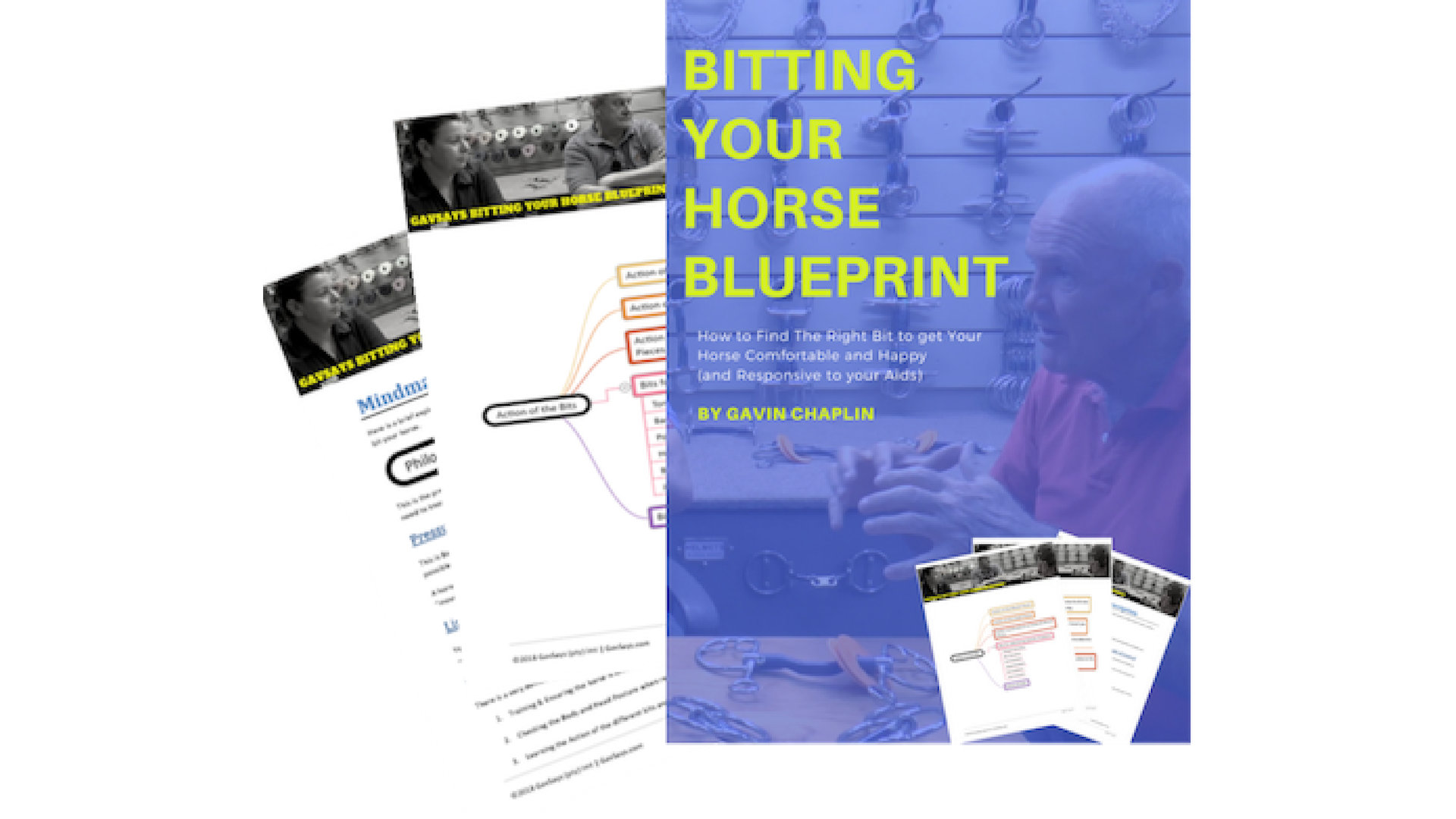How Horse Bits Work:
Gags, Snaffles & Their Actions
Choosing the right bit for your horse is often a challenge. So equip yourself with an understanding of how bits work - and the different action of each bit, to make choosing the right bit easier.
In this video Bomber Nel tells us about the actions of the different Gags and Snaffles.
Bomber and I are old friends and I fully endorse his reputation as not only one of the best bit makers in the world, but one of the most knowledgeable when it comes to advice on which bit to use on your particular horse.
This is a highly informative video that has received over 3,500,000 views on Facebook.
Enjoy... And drop a comment below with your thoughts or questions.
Featured [FREE] Download: Once you've watched the video below continue your Bitting Education from Bomber and myself with the "Bitting Your Horse Blueprint" (16 Page Pdf).
Why a Skull? ... & How Horse Bits Work
Transcript:
Tell us about the skull and how you've gone about using that to actually get the bits fitting etc, and why you use it. Right. When I first started, it was a fascination. And you know, like you passionate about what you are doing. I had to learn from myself and I just collected a whole lot of different skulls.
Whenever anyone was, had a horse put down, I would ask if possible, to get it, on all different breeds. A lot of people don't realize how wide the top jaw is. The bottom jaw is very, very narrow, and that is where the bit sits. And if you look inside your horses mouth, I say always, close a horse's mouth, lift the lips and look at the gap between what we call the bars.
Now, obviously you've got all your flesh there, but when that is closed, have a look at the gap between the bars and it's generally the thickness of a man's forefinger, which is 16 millimeters. Therefore, by going more than 16, and everyone wants these big fat bits. What's happening then, the horse can't closes it's mouth. So, automatically we're very clever, we always put a drop nose ban or clamp it closed because the mouth is open.
So, now we creating pressures on the bar before we've even touched the rein. Something else that's really interesting that I heard the other day. Was from a dental technician saying, that if you close the horses mouth too tight here, you create tension at the top of the head here. And so you actually lock the horse. Yes. So, it's actually a fallacy to be tying that drop nose band.
You know, again, we get back pressure equals resistance. Every time you're doing one of these, it's another pressure point. Which is going to be another point of resistance. Which is adding to more to lack of control. And it will evade you in some different way.
Correct. I always say if a horse is going to open his mouth before closing it, let's establish what is causing the problem and address the problem, rather than just clamping it closed. Because all we're doing there is creating another problem.
The other most important thing is the size of that horse's tongue. The jawbone is very narrow. That horse's tongue is as big as my forearm, and that has got to fit in there. We'll take the conventional, what are called single break snaffle. It goes on and you can see whatever we do it putting pressure.
And the snaffle now is giving you a Nutcracker action, which is squashing the tongue. And it's putting pressure on the bars. And a horse being an animal of flight, a horse will never yield to pressure. It will always run away from pressure or pain.
So, with this, now that action. Typical, if it doesn't like tongue pressure, this bit will throw the horse's head up, up in the air. So, that is a single break. Then you will go to a, what I call a three-piece bit. Now you can see it's putting less bar pressure, because there is more tongue pressure.
And by creating tongue pressure, 80-85% of horses, when you do that, it's going to bring the head down, okay. The wider I make that joint. The more tongue pressure I'm creating and the less bar pressure. So, bar will lift, tongue will drop. These joints are all very, Bomber puts plates, some with a roller and some of these are elliptical.
What's the difference in those Bomber? All I'm doing is just creating either bigger or smaller surface area. As I demonstrated earlier with my finger against you there and there, the same applies there, that length there, and that length there, is the same length, 45 millimeters. But that has got a bigger surface area. So, that is slightly kinder to the tongue, that is slightly sharper.
Now this one is what I call the Buster Roller. I've made that link shorter. And by shortening that, it is now going to create bar pressure. And bar pressure, the horses that you find running downhill, leaning on you down there. This will now lift the head up, cause it's working on the bars. That little roller comes in on the tongue and it tucks the chin in.
So, you lifting and doing that at the same time. Everyone knows the Barry gag in polo. The Barry gag is a strong bit, but generally what the Barry is, is for lifting a horse's head up. You find when they get tired or they resist, they're inclined to lean down and get heavy on you, and a Barry will lift it. Okay. But the Buster Roller, because of the offset you, correct.
Correct. More bar pressure. I like to demonstrate on your arm. If I do that, you can feel the pressure. Very much so. Okay. So, now if I take the Buster Roller, which is that one, now, take your arm again. You can see there, but now it's minimized. I can feel the pressure still though. Yes. You can. Bu if you put that, the plate there.
Now you can feel there's a lot less. No bar pressure at all. Okay. Correct. That's really interesting.
Also Watch:
And find out more about Bomber Nel and Bombers Equestrian here.




Comments
Got questions, comments or feedback! Then have your say in the box below...